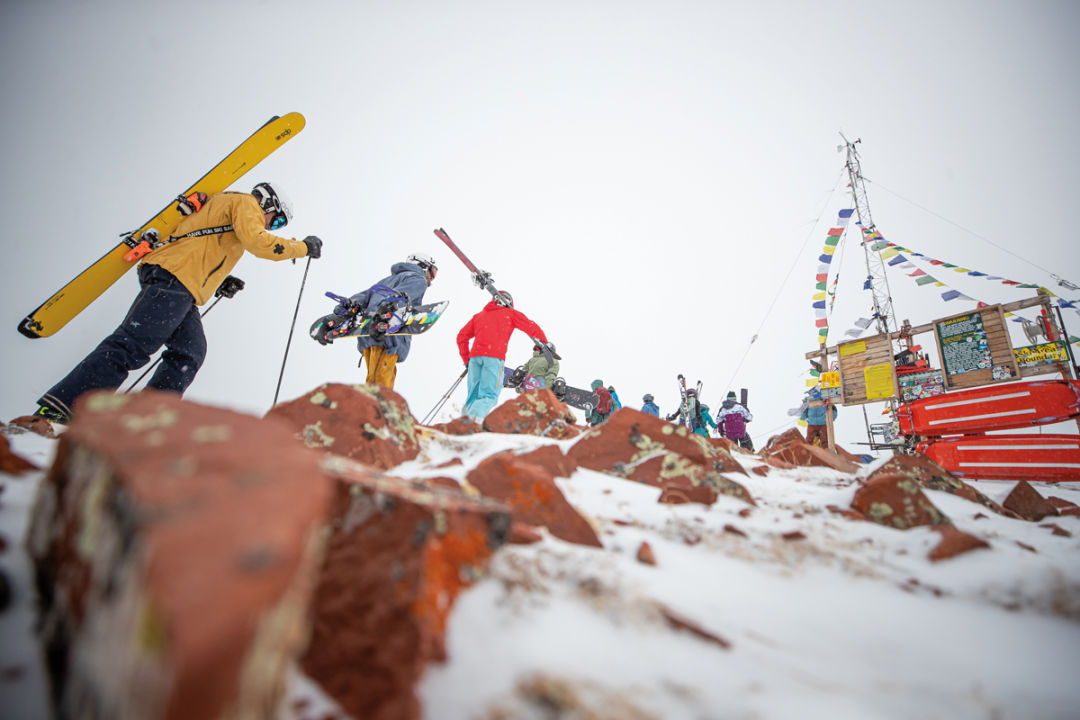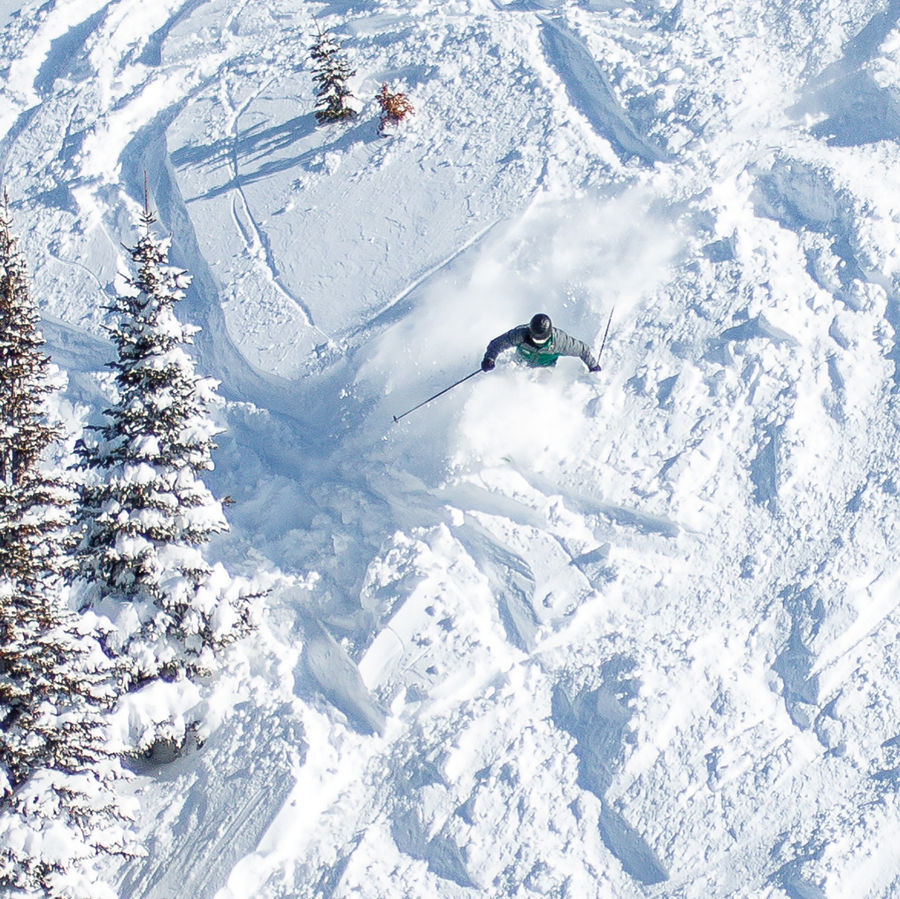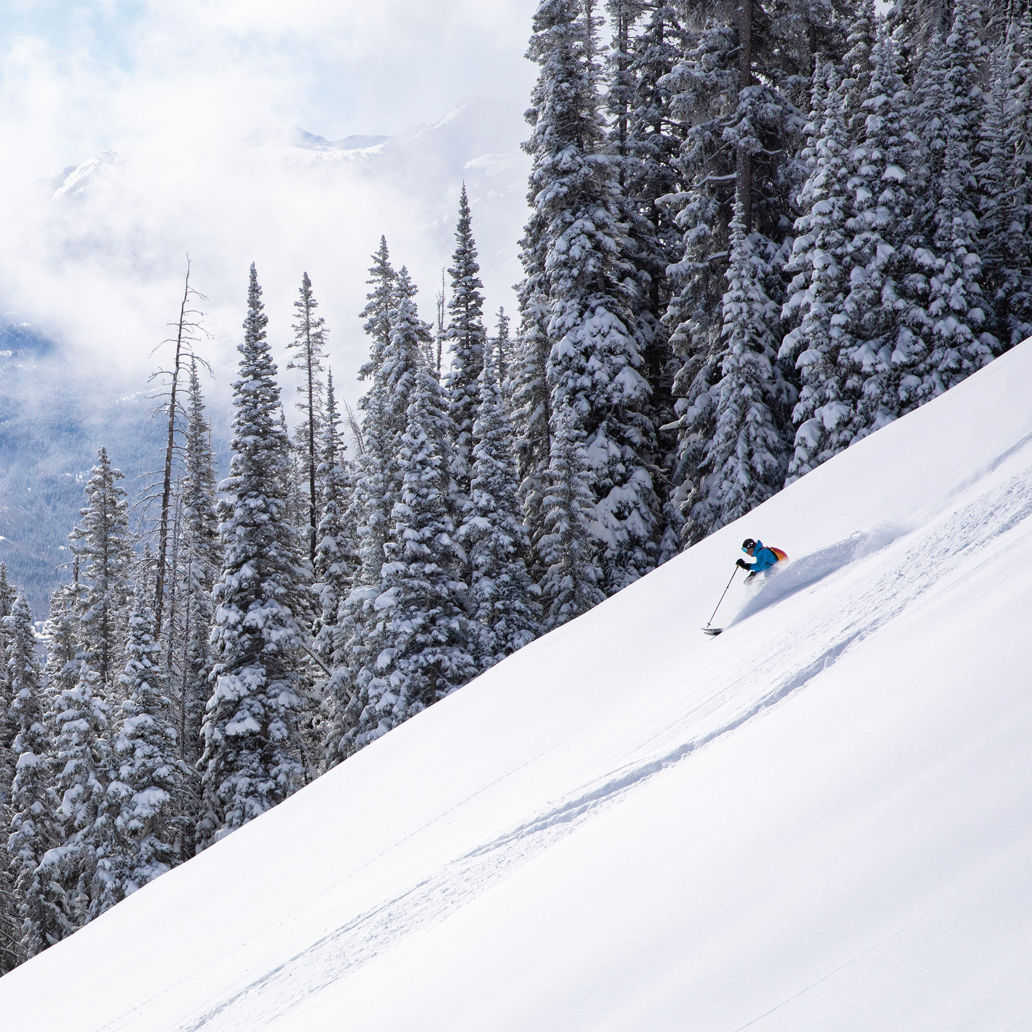Tackle Aspen Highlands’ Flagship Terrain

Hikers near the summit of Highland Bowl.
Aspen Highlands offers plenty of challenge all over the mountain, but its marquee terrain is Highland Bowl. The bowl holds some of the steepest lines at any Colorado ski area and requires a 30- to 45-minute bootpack to its 12,392-foot summit. This winter, there are no snowcat rides up the first section, so you’ll have to hoof it the whole way. Strap your skis or board to a backpack, or buy a bowl strap from the ski patrol, for the hike up. Wear a hat and carry your helmet to avoid overheating. Bring water. And if somebody is nipping at your heels on the hike up, it’s good etiquette to step out of the boot track and let them pass. Got all that? Good; here’s where to ski.
The Y Zones: Adventurer’s delight
The Y Zones are the easiest slopes in the Bowl to access, including some shots like Y-5 to Y-12 that don’t require any hiking whatsoever (just stealthy traversing). But conditions here can change quickly, sometimes overnight and sometimes in the course of an hour. Because the Y Zones face south, sunshine turns deep powder into high-density mank and packed powder into frozen ocean.
This area also features more varied terrain—rocks, cliff bands, knobs, and narrow slots like Go Go Gully (a.k.a. Y-3)—than anywhere else in the Bowl. But when their aspect is negated—during the dark days of December and January, say, or during day three or four of a storm cycle—the Y Zones can offer snow of the very highest quality, and more of it, because there’s no wasted time spent hiking up the ridge.
The B Zones: Hidden in plain sight
After a new snow and particularly during the early season, the high gullies of the B Zones are notorious for luring in skiers with their striking good looks and, well, intoxicating virgin appeal. But ask yourself this: why hasn’t anybody skied in there already? The answer may lie in what lurks just below the surface, namely reefs of rock most prominent on vertical ribs separating each gully.
Heartbreak can be avoided by learning the navigable channels—through Ozone, B-1, and B-2, say—with care at first. However, it is also entirely conceivable that nobody is skiing in some of these places because the mob mentality is hell-bent on getting to the G Zones. From this perspective, the high B’s can offer premium skiing without the intense skier traffic.
The G Zones: The popular kids
Life is good up here, where—no exaggeration—all-time dream lines are served on the regular. The combination of altitude, northerly aspect, and slope angle keeps the snow in a sort of Arctic shade all season, and on good days you can literally do no wrong. Stands of unusually large Douglas fir and Engelmann spruce function as whimsical guides through assorted gullies and glades, or stay high left for G-8 or G-6 and feel the tangible pull of gravity on one of the biggest inbounds faces in North America.
One minor counterpoint: everybody wants to ski the G Zones, and some do it early, often, and fast. This is why the discerning skier is constantly turning over in his or her head things like crowd density; weather data such as new snow, wind, and preexisting conditions; hypothesized times that ski patrol will open certain gates, if at all; and whether or not to ditch slower friends—all in the name of first tracks in the promised land.
Heads up this season
As noted above, the Bowl snowcat will not be running...Find heated outdoor dining tents at the Merry-Go-Round and Cloud Nine...Hold the Veuve Clicquot—Cloud Nine’s notorious party scene is on hiatus this winter, to either your relief or dismay...The Sled, a food truck pulled by a snowcat, will be parked outside Cloud Nine, serving soup and sandwiches.



















































